Things fail, it's inevitable so make sure you have something in place to keep the shoot on track if your latest and greatest flash triggers lets you down. I always, always, always keep at least one basic sync cable in my bag for this very reason. This simple cable saved this shoot from being just another series of natural light snaps without question.
What's a Flash Trigger?
First off, "what is a flash trigger?" It's simply a way to fire your flash at the same time you press the shutter when the flash is mounted somewhere other than on top of your camera. I personally use a variety of methods to do this, and it can be as simple as a direct cable from camera to flash or the slightly more advanced infrared triggers or radio triggers. If you've ever looked into getting a flash trigger you'll know that not only are there all those initial choices but there's also a million and one options within them. Prices also vary greatly and there are plenty of well established companies like Pocket Wizard who offer the premium level products but also at premium prices. I've used the radio triggers from Pocket Wizard in the past and they have always worked well and as intended but I'll be honest and say that as a studio strobe shooter I rarely used some of the more impressive features their products have but those features might be better suited to tricky Speedlight setups. For me personally and my photographic needs I simply need the flash to fire when I press the shutter on my camera. Surely that's not too much to ask is it?
You'd be surprised and as a result I often resort to infrared triggers over the radio triggers as they have been more consistent and reliable in a controlled studio environment.
I've gone through my fair share of infrared triggers over the years and although they are ugly as all hell they are thankfully relatively inexpensive. They sit on the cameras hotshoe and send out an infrared signal to fire the flashes whenever you press the shutter.
What's the difference between an infrared trigger and radio trigger?
I usually shoot with multiple lights in my setups and often upwards of 4 and 5 lights, all of which have to fire at the same time not just most of them. A radio trigger for example requires a transceiver/transmitter, this sits on the camera and sends out a radio signal to the receiver which is attached to the flash which in turn fires. Simple right? Yes and no. You've fired one flash perfectly but it's now that flashes sole responsibility to fire the other flashes as the other flashes in the setup don't have receivers. All of the other flashes have infrared receivers in them though so as soon as they see the first radio triggered flash go off they then fire themselves and the chain goes on. This all happens very quickly but not simultaneously so if you're trying to capture something fast moving with this method then you'll see ghosting as the first flash catches an image then another flash fires and so on but between the flashes firing the subject may have moved. Like I say this is only fractional but it's worth being aware of when photographing water or other fast moving objects.
The little red square circled here is what looks for other flashes firing and triggers itself to flash. (Ignore the tinfoil here, that was used to "boost" the light capturing abilities of the head. It works but it's hardly very professional looking.)
Infrared triggers send out the initial signal from the camera so all flash heads should receive a firing prompt at the same time eliminating this issue but infrared also has another benefit. A lot of my lighting setups will include focused areas of flashes that only illuminate small areas of the subject. This flash may be a snoot or grid so it's very directional and won't spread the flash around the rest of the studio (see the diagrams below as an example). This is great but this flash will also not spill onto other flash heads in the setup so it won't fire the other flashes. To get the maximum use of radio triggers you ideally need all of your flash heads to have a receiver so that they all fire at the same time but also that all the flash heads will fire even if you're using very directional lighting. There are many flash heads that have built in radio receivers now or at least radio card slots to add them. But if like me your flash heads don't, you'll need to purchase receives for all of your flash heads and this can get a little pricey for 5 or 6 of them.
In this shot you can see the radio triggers at work. The green dots represent the radio triggers. The one on the camera fires the receiver on the soft box which in turn fires the infrared triggers inbuilt on the additional lights. The infrared triggers are shown as red dots here.
Now lets look at a similar setup but this time we'll be using more directional lighting. The initial trigger works as expected and the camera triggers the strobe as before. This time however we are using directional lighting so the initial flash only fires the infrared sensor that receives flash light. The additional light that didn't fire couldn't see the flash this time because the initial flash was too directional resulting in a misfire. The only was to remedy this with radio triggers is to have all of the flash heads equipped with receivers.
Finally lets look at the infrared triggers (shown here as red dots). The initial trigger from the camera can see all the lights so all the lights fire at the same time regardless of the lighting modifier used. None of the lights is waiting for the prompt from another flash head as the camera talks to all of them simultaneously.
I'm a cheapskate
No that's unfair, I wouldn't say that I'm a cheapskate per se but like every other business owner I've EVER met, I hate spending money. There's a difference. I prefer to say that I'm "efficient" when it comes to spending money on business tools so if I can find a product that does exactly what I want and it's less expensive than other similar products then surely it deserves consideration.
When I'm buying new products, I'm mindful of how many features the new product has that I'll actually use. "Oh cool that new IJUF camera has 4K, AWESOME!" Will I ever use it? No of course not so I'm not best pleased to pay for features I won't use.
I've always been a firm believer of this quote from Antoine de Saint-Exupery.
Perfection is achieved not when there is nothing more to add, but when there is nothing left to take away.” –Antoine de Saint-Exupery
Simply put, if it does exactly what I want then I don't need anything else getting in the way. Enter Godox.
Who the hell is Godox Photo Equipment Co. Ltd?
Godox has taken the photographic industry by storm in recent years but they've actually been around since 1993. Godox is based in China and is a photo equipment company that operates in the middle ground between the ultra cheap and the more expensive brand names. Godox benefits from exceptionally low manufacturing costs thanks to it's location plus it has an insanely short time-to-market window. This essentially means that it can produce huge quantities of products and have them for sale in a very short space of time. In a digital age where everybody knows the moment a new product is released, having a company that's quick on its feet is a plus. Before you say it, no this simply isn't another Chinese company that copies other manufactures products and sells their version at a lower price point. Godox actually has their own R&D team of around 25 people. That's larger than many major international lighting brands and they bring out some pretty impressive lights at some silly low prices. I haven't used them myself but I haven't heard anything but good news about them.
I purchased my flash triggers from Godox for a couple of reasons that I'll go into. Firstly they do exactly what I want and nothing more, they fire the lights when I press the shutter. I will still use an infrared trigger when appropriate but for times where I need a radio trigger, for example where line-of-sight prevents infrared triggers from working consistently, these radio triggers will be perfect. Secondly, they are very reasonably priced, no they're not the cheapest option out there but anything cheaper than this will simply fail and break after a couple of uses. Trust me I've tried those. Godox is currently in that sweet spot which is reasonably priced but still reasonably well made and reliable. Remember these things operate on radio waves, a technology that has been around a while now and radio waves don't have a "God tier" of effectiveness regardless of what marketing gurus may tell you.
So what's the Godox Flash Trigger like?
I purchased a couple of different products, a transceiver and receiver combo pack plus an additional receiver.
The Godox receiver and transceiver combo pack (on the left) plus an additional receiver (on the right).
…and because I bothered to take these back-of-pack shots I'm going to show them to you for no reason I can think of.
The transceiver and receiver pack plus additional receiver cost me £24.99 including postage. I'M SORRY, WHAT? Yes you read that correctly, those three items and postage for less than 25 quid. I genuinely felt bad.
If you're a real scumbag you can even "Make Offer" if you think £25 is still too much for all that lot!
It's well packaged and comes with the intended products like receiver and transceiver plus each box contains instructions, warranty and an input jack converter.
Each box contains the stated transmitter and receiver plus warranty and input jack converter. The input converter is actually the opposite to what the eBay listing stated, it actually converts the strobe input to a speedlight input. This is even better for me as a strobe shooter. One less piece of kit to loose.
What's the difference between a transceiver and a transmitter?
This is actually fairly simple but often gets confused. A transmitter simply transmits a signal, nothing more. A transceiver on the other hand transmits a signal but also has the ability to receive a signal. This is particularly useful for speedlight shooters who like to adjust the flash outputs from their camera for example. For me, I simply need to fire a flash so the transmitter is perfect for me.
What I like about my Godox Flash Triggers
First off, I love how lightweight each of these products are. Both the transmitter and the receiver weigh very little but the transmitter is of most importance as it's situated on top of your camera all day so any additional weight up there is going to be noticeable very quickly. The biggest reason for this low weight is the absence of cumbersome batteries. A lot of transmitters contain AA batteries whereas this one is powered by a simple 12V lithium ion button battery. This whole unit weighs less than a box of matches and is hardly noticeable when on your camera. The battery is apparently good for around 10,000 shots too. We shall see.
The Godox transmitter is incredibly small and lightweight and weights less than a box of matches thanks to its efficient and button battery.
I also really like that the receivers are powered via the flash heads. You simply plug the receiver into the flash head and then plug the the power cable into the receiver. This is great for a couple of reasons, again it keeps the weight down, you don't have additional batteries in there plus it limits the points of failure in the system. You aren't worrying about the batteries running out on them plus you aren't carrying additional batteries around with you for this eventuality.
The Godox receivers plugs straight into the flash heads power socket and then you plug the power directly into that. This negates the need for additional batteries.
On this topic of having the receivers plugged into the power supply like this I really like how uncluttered that is. That might sound odd but I've had several very expensive receivers in the past but they all seem to have a four foot cable to attach them to the lights. This simply isn't needed at all so you end up with 3 1/2 foot of unwanted cable (granted this is alittel exaggeration but the cables are stupidly long). The result being is that you never let the receiver hang down like that so you have to find a way of attaching it to the light. In the past I've had it gaffer taped to the light, velcroed to the light, I've even had elastic bands around them attaching them to the light stands, it's an absolute mess. This Godox receiver simply plugs in exactly where you already had a plug and hangs seamlessly down where you already had a cable hanging down before. No stupid MacGyver tape and swearing mess of unused cables.
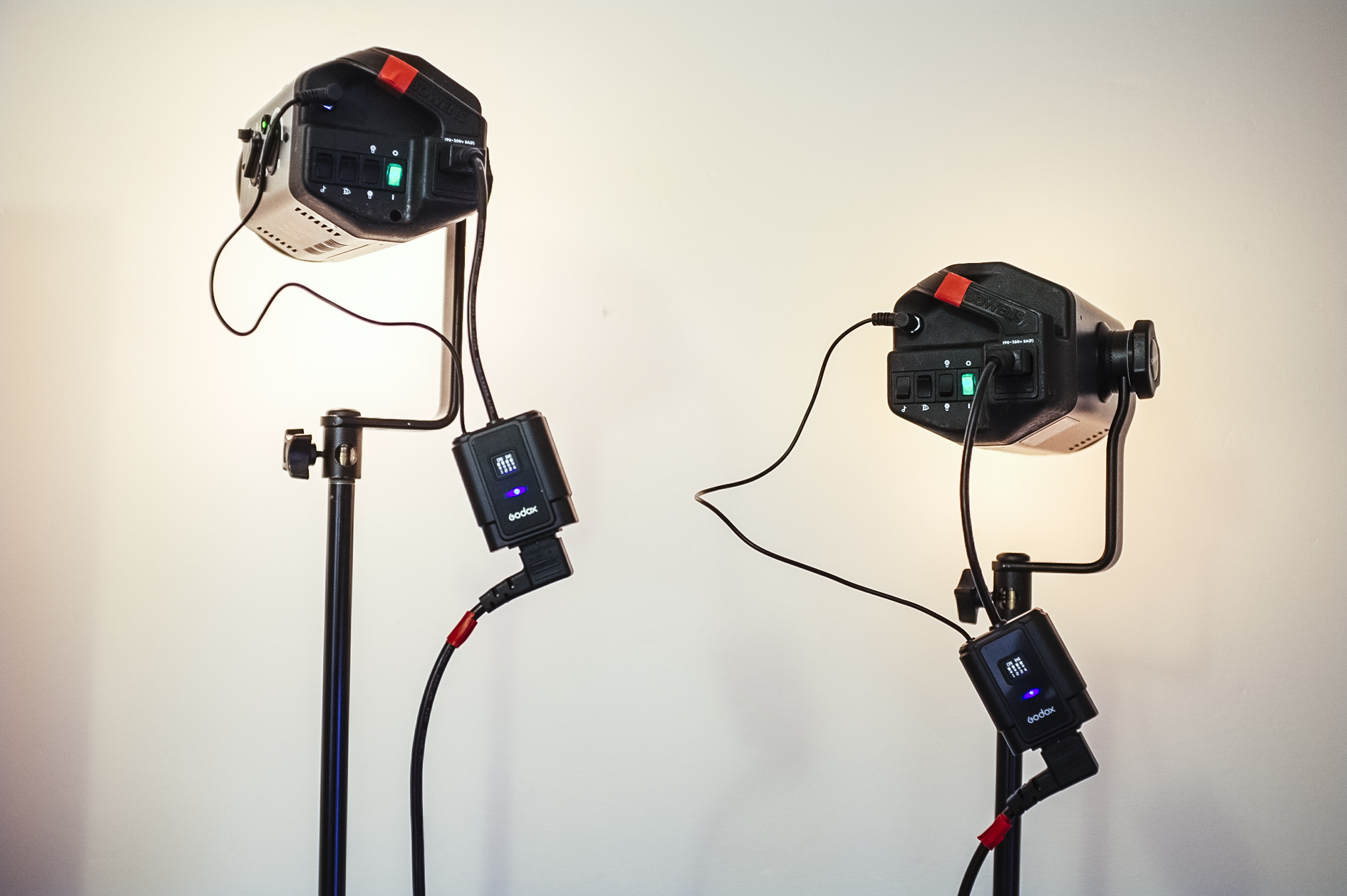
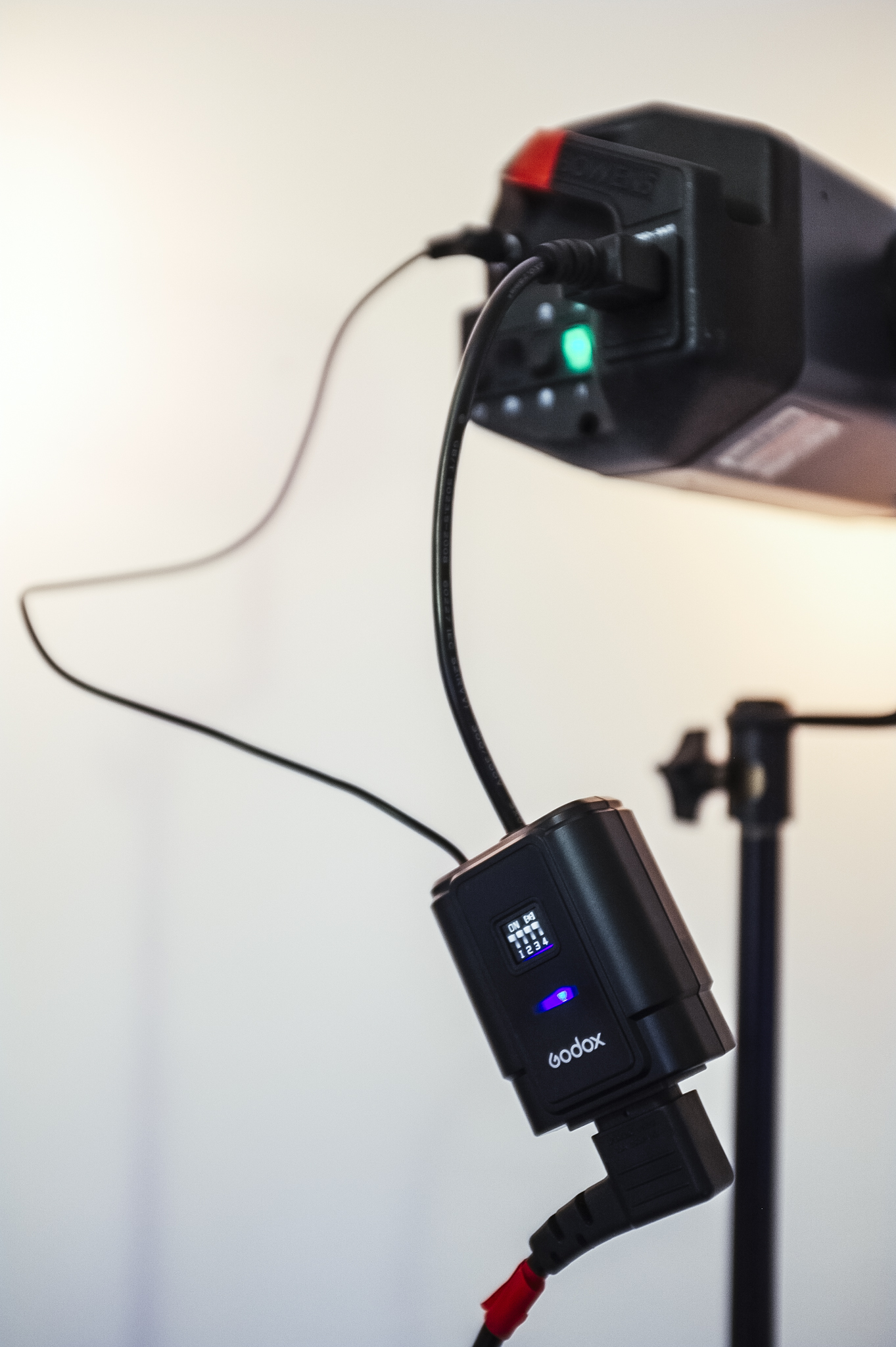
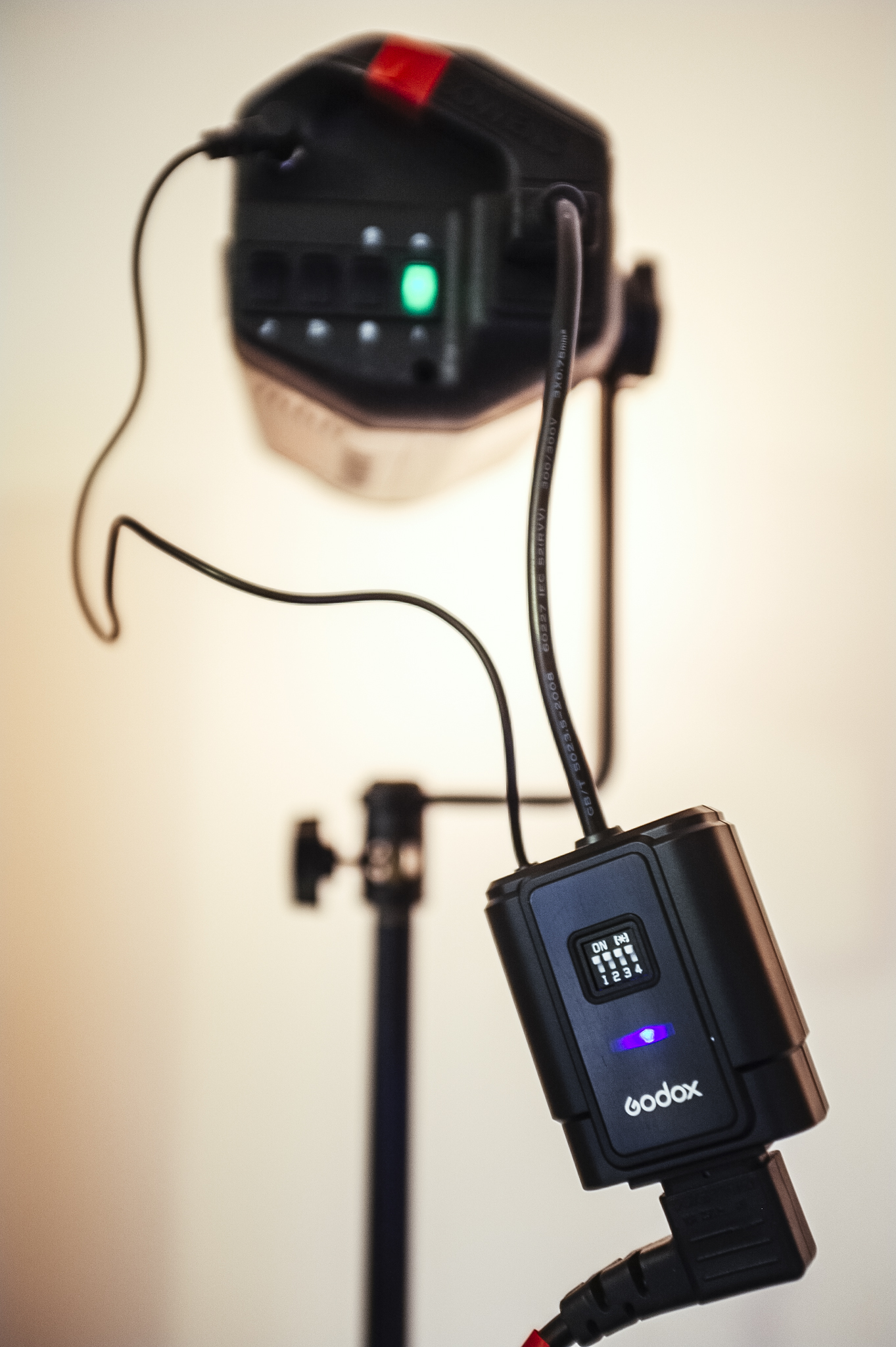

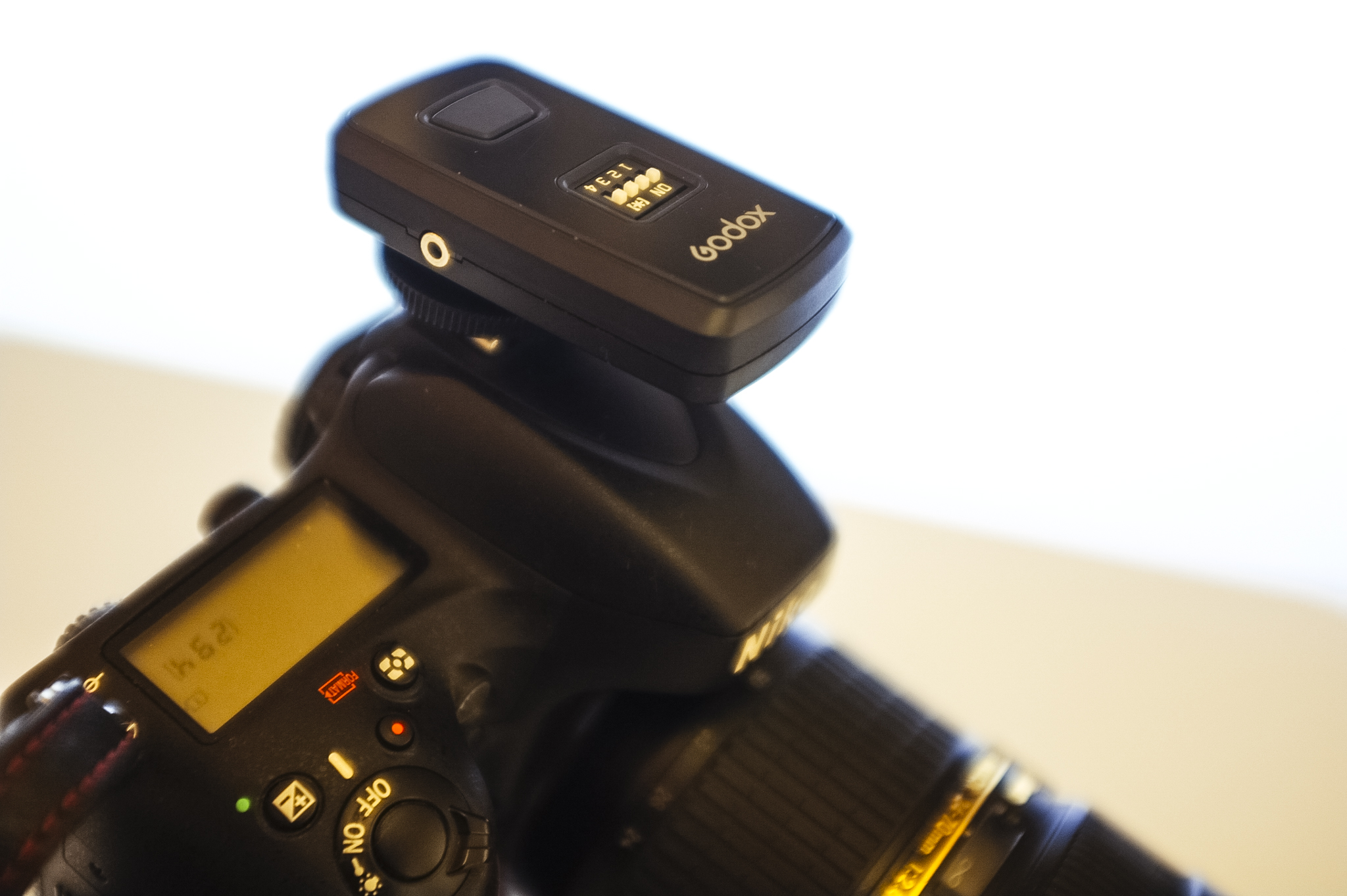
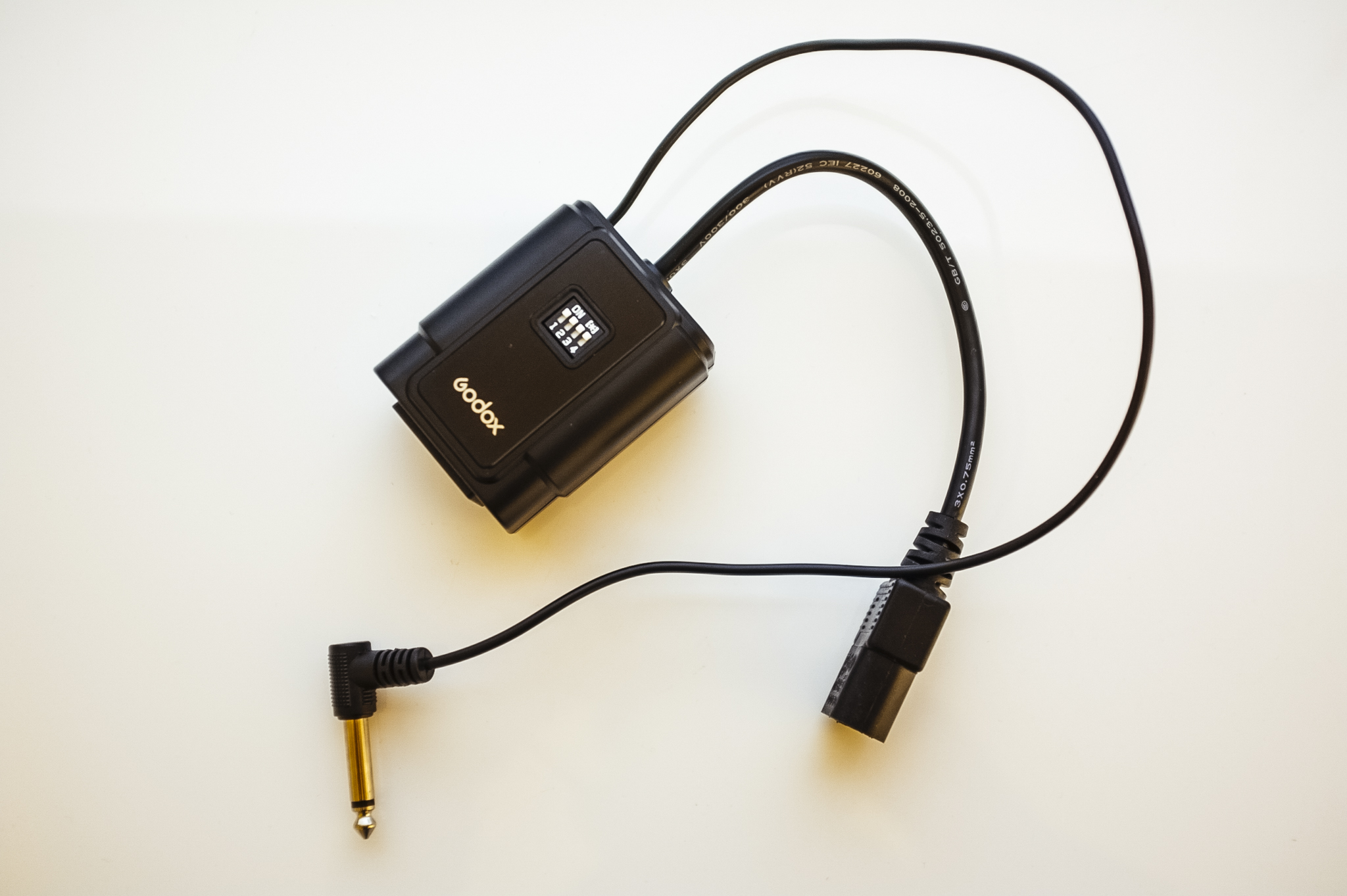
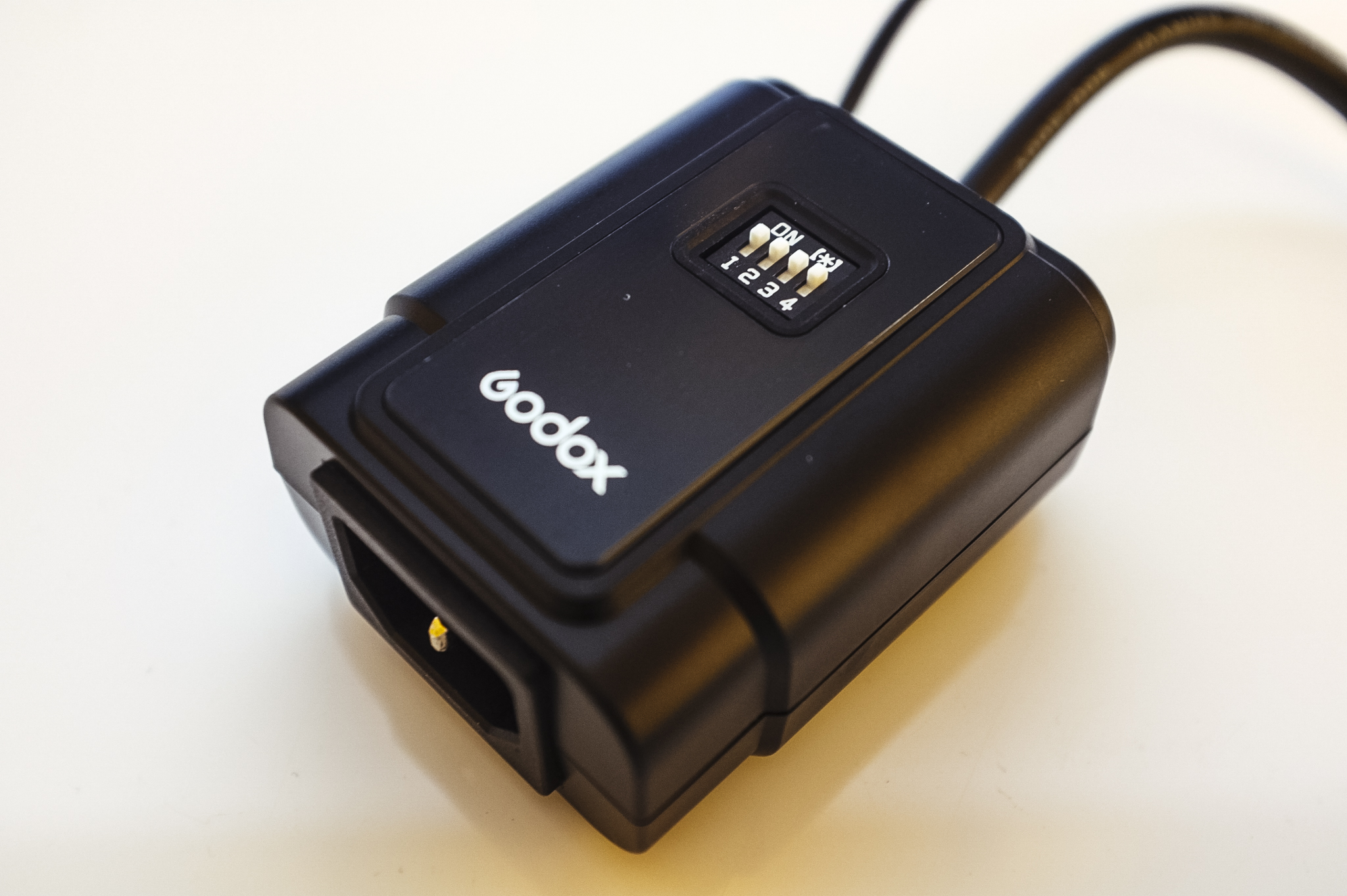
Whether you decide to purchase flash triggers or not, make sure you have a backup plan. Look at this guy, he apparently "FIXED" my flash trigger on the day with some parcel tape. We looked super pro in front of the client on that day ;)
Points to Remember
- These Godox transmitters and receivers are very, very affordable.
- They are not the cheapest but they have a solid build quality without the big name prices.
- They are incredibly lightweight. The transmitter is especially light and ideal to have on top of your camera all day as you'll barely notice it's there.
- The receiver unit plugs directly into the power socket of the flash heads so you don't need to worry about additional power for those or carry additional batteries for them.
- The receiver hangs down in place of your normal power supply cable so you won't need to worry about taping it to the light head or the light stand with yards of spare cable.
That's pretty much it for the basics of flash triggers and although these points are heavily weighted towards studio strobe users like myself the same principles are still relevant even if you're using speedlights instead.
If anybody has any questions about any of that then as always feel free to fire away and I will do my best to answer them as soon as I can. Plus I highly recommend these Godox triggers, and at that stupid low price I reckon you should pick up a set and give them a go. I'll be getting a couple more receivers now for all my other lights too so make sure you leave me some :D
Other articles that might interest you...
Old and New Nikon lens review - Is there any difference in the new lenses?
Start taking studio shots for under £25
10 things your camera bag needs as well as that extra flash sync cable
:WARNING: I also sell stuff!
If you liked some of the gelled lighting shots in this article and you'd be interested in learning how to take those shots yourself or you're simply interested in finding out everything there is to know about Gelled Lighting then why not check one of my workshops: Gelled Lighting Workshop
I also offer comprehensive coloured gel packs. These collections of gels are what I use day to day to create some of the most highly saturated colours around. If you're looking at getting into gelled lighting or need to get stronger and richer colours in your coloured gel work why not check out my Jake Hicks Photography Gel Packs
















